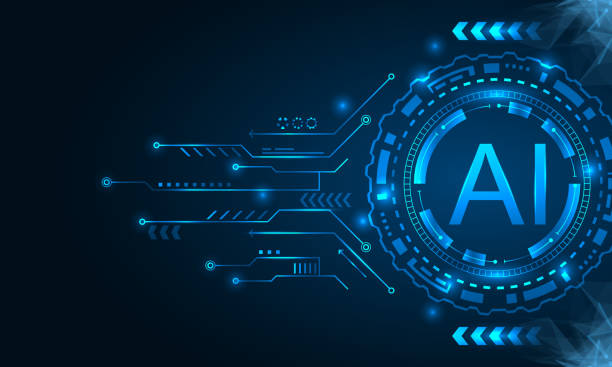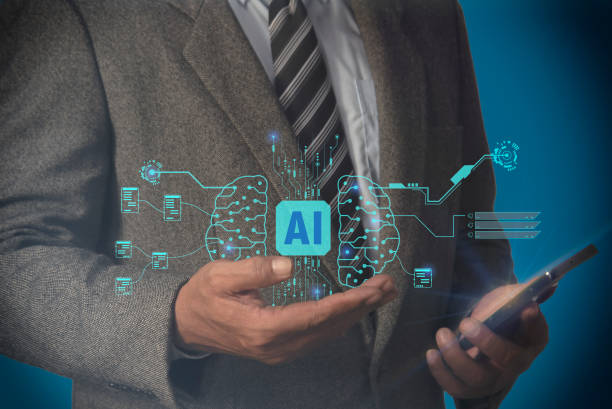What is an Artificial Intelligence Robot? Definition and Basic Concepts
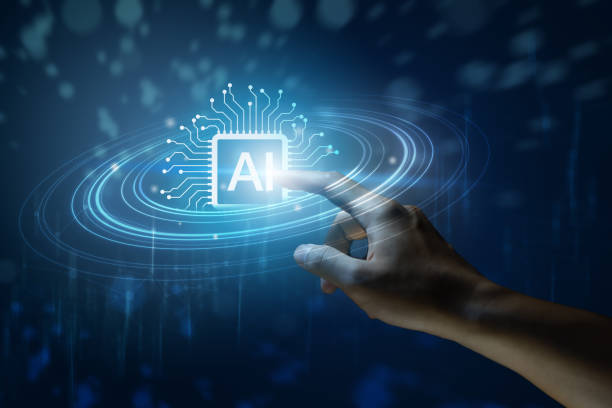
#Artificial Intelligence Robot is a combination of two fields: #robotics and #artificial_intelligence.
Simply put, an AI robot is a machine that uses artificial intelligence algorithms to perform tasks that usually require human intelligence.
These tasks can include learning, problem-solving, decision-making, natural language understanding, and image processing. An AI robot, using data and information it receives from its surroundings, is able to identify patterns and make decisions based on them.
For example, an #AI_robot used to check the quality of products in a factory can detect defective products by analyzing images of the products.
These robots have sensors and actuators that enable interaction with the physical world.
Sensors collect information such as temperature, pressure, light, and sound, while actuators allow the robot to move, manipulate objects, and interact with its environment.
The main difference between an AI robot and traditional robots is that traditional robots operate based on pre-programmed instructions and do not have the ability to adapt to new situations.
While an AI robot is able to improve its performance by learning from data and experiences and make decisions in different situations.
For example, an #AI_robot designed to assist surgeons in the operating room can use #artificial_intelligence and image processing to accurately guide surgical instruments and reduce potential errors.
Are you losing potential customers due to a non-professional website? Resaweb is your answer! With our specialized corporate website design services:
✅ Enhance the credibility and position of your business
✅ Experience attracting more targeted customers
⚡ Take action now to receive a free consultation!
Types of Artificial Intelligence Robots Based on Application and Performance
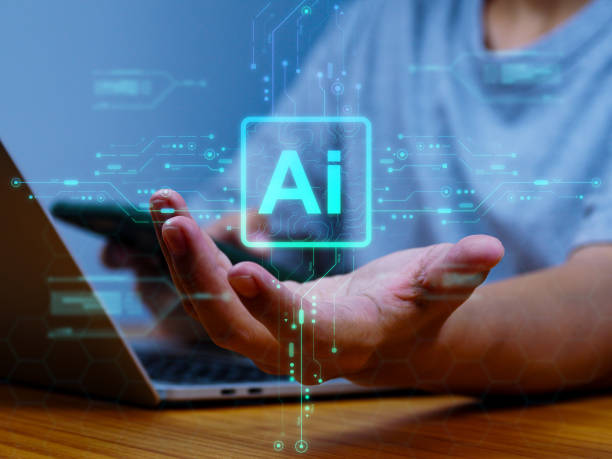
Artificial intelligence robots can be categorized based on various criteria, including the type of application, level of intelligence, and type of architecture.
Based on application, AI robots can be divided into the following categories:
Industrial robots These robots are used in production lines and factories to perform repetitive and dangerous tasks.
Industrial robots equipped with artificial intelligence can improve their performance by learning from data and reduce potential errors.
For example, industrial robots equipped with machine vision can separate defective parts from the production line.
Service robots These robots are used in various environments such as hospitals, hotels, and homes to provide services to humans.
Service robots can perform tasks such as cleaning, transportation, and providing information.
Medical robots These robots are used in hospitals and medical centers to assist surgeons, nurses, and patients.
Medical robots can perform tasks such as precise surgery, patient rehabilitation, and medication delivery.
Medical robots using artificial intelligence can analyze medical images and help doctors diagnose diseases.
Military robots These robots are used in battlefields and military operations to perform dangerous and sensitive tasks.
Military robots can perform tasks such as reconnaissance, bomb disposal, and attacking the enemy.
Also, AI robots can be divided into two general categories based on their level of intelligence: intelligent robots and semi-intelligent robots.
Intelligent robots are capable of learning, problem-solving, and independent decision-making, while semi-intelligent robots are programmed to perform specific tasks and do not have the ability to adapt to new situations.
Applications of Artificial Intelligence Robots in Various Industries
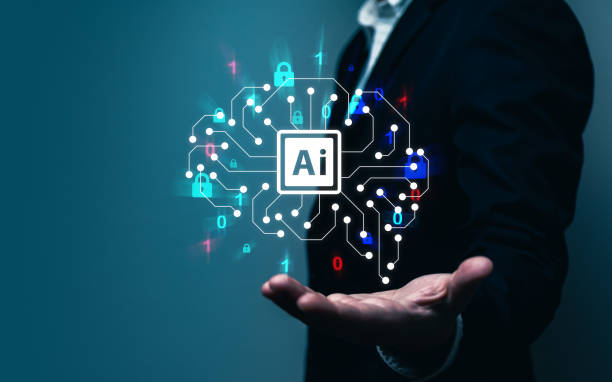
Artificial Intelligence Robots, due to their unique abilities, have extensive applications in various industries.
Some of the most important applications of these robots include:
Manufacturing industry In the manufacturing industry, AI robots are used to perform repetitive, dangerous, and highly accurate tasks.
These robots can perform tasks such as welding, painting, packaging, and quality control with high accuracy and speed.
The use of #artificial_intelligence_robots in manufacturing can lead to increased productivity, reduced costs, and improved product quality.
Service industry In the service industry, AI robots are used to provide services to customers, perform support tasks, and automate processes.
These robots can perform tasks such as answering customer questions, providing information, and processing orders.
Medical industry In the medical industry, AI robots are used to assist surgeons, nurses, and patients.
These robots can perform tasks such as precise surgery, patient rehabilitation, and medication delivery.
The use of AI robots in medicine can lead to improved surgical accuracy, reduced patient recovery time, and increased efficiency of medical service delivery.
Transportation industry In the transportation industry, AI robots are used to automate processes, improve safety, and increase efficiency.
These robots can perform tasks such as autonomous driving, traffic control, and fleet management.
In addition to these industries, AI robots have many applications in other industries such as agriculture, mining, and energy.
In general, any industry that requires repetitive, dangerous, or highly accurate tasks can benefit from AI robots.
| Industry | Application |
|---|---|
| Manufacturing | Production line automation, quality control |
| Services | Customer service, support |
| Medical | Precise surgery, rehabilitation |
| Transportation | Autonomous driving, traffic management |
Advantages and Disadvantages of Using Artificial Intelligence Robots
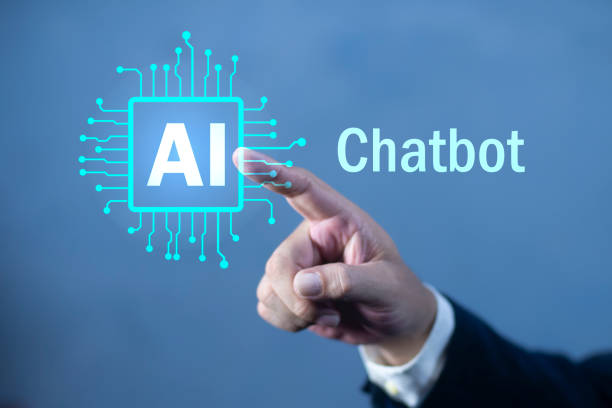
The use of artificial intelligence robots has many advantages and disadvantages, which we will examine in this section.
Advantages
- Increased productivity AI robots can perform tasks with greater speed and accuracy than humans, which leads to increased productivity and reduced costs.
- Reduced human error AI robots are immune to human error and can perform tasks without fatigue and with high accuracy.
- Performing dangerous tasks AI robots can perform dangerous and difficult tasks without endangering human lives.
- Improved product quality AI robots can improve product quality by precisely controlling processes.
- Providing better services AI robots can increase customer satisfaction by providing fast and accurate services.
Disadvantages
- High deployment cost Deploying AI robots requires a high initial investment.
- Need for expertise Maintaining and repairing AI robots requires technical expertise and knowledge.
- Job loss The use of AI robots can lead to job losses for some people.
- Ethical concerns The use of AI robots can raise ethical concerns such as privacy and accountability.
- Technical limitations AI robots still have technical limitations in some areas and cannot completely replace humans.
Despite the disadvantages mentioned, the advantages of using AI robots are much greater, and they are expected to play a more important role in various industries in the future.
Is your online store ready to attract maximum customers and increase sales? Resaweb transforms your online business with modern and efficient online store designs.
✅ Increased speed and improved SEO
✅ Excellent user experience on mobile and desktop⚡ Get a free consultation on online store design from Resaweb!
Challenges Facing the Development of Artificial Intelligence Robots in Iran
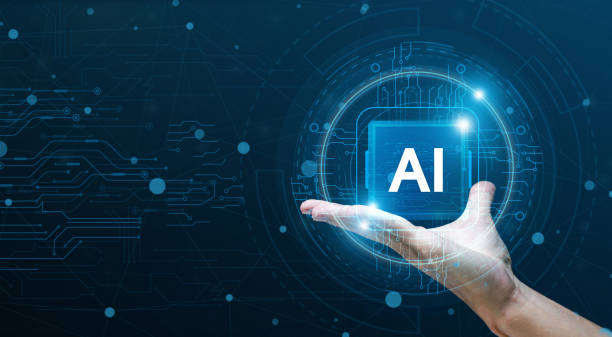
The development of artificial intelligence robots in Iran faces many challenges, the most important of which we will examine in this section.
Lack of investment One of the biggest challenges facing the development of AI robots in Iran is the lack of investment in this area.
Many companies and startups active in this field are unable to develop and commercialize their products due to lack of financial resources.
Shortage of specialists A shortage of specialists in fields related to AI robots, such as #programming, #robotics, and #artificial_intelligence, is another important challenge.
Universities and educational centers need to make more efforts to train specialists in these fields.
Lack of suitable infrastructure The development of AI robots requires suitable infrastructure, such as high-speed communication networks, data centers, and specialized laboratories.
Unfortunately, the existing infrastructure in Iran is still far from global standards.
Legal and regulatory restrictions Legal and regulatory restrictions can also hinder the development of AI robots in Iran.
The government should create a favorable environment for companies and startups active in this field by enacting appropriate laws and regulations.
Negative attitude towards technology A negative attitude towards technology and resistance to change can also hinder the development of AI robots in Iran.
This attitude must be changed by raising awareness and promoting a culture of technology use.
Despite these challenges, Iran has great potential for developing AI robots.
By removing obstacles and supporting companies and startups active in this field, significant progress can be made in this area.
The Future of Artificial Intelligence Robots: Visions and Possibilities
![]()
The future of artificial intelligence robots is very bright and full of possibilities.
With the ever-increasing advances in the fields of #artificial_intelligence, #machine_learning, and #robotics, AI robots are expected to play a more important role in our lives.
In the future, AI robots can play an important role in various fields such as:
Health and treatment AI robots can play an important role in complex surgeries, disease diagnosis, patient rehabilitation, and providing services to the elderly and disabled.
Education AI robots can act as a private tutor, helping students learn various subjects and adjusting educational content based on the individual needs of each student.
Transportation AI robots can guide self-driving cars, manage traffic, and create intelligent transportation systems.
Industry AI robots can automate production lines, improve product quality, and reduce costs.
Agriculture AI robots can help in planting, maintaining, and harvesting agricultural products, optimize water and fertilizer consumption, and detect pests and diseases.
Services AI robots can provide services to customers, answer their questions, and solve their problems in hotels, restaurants, stores, and other service centers.
However, the development of AI robots requires attention to ethical and social issues as well.
It must be ensured that this technology is used for the benefit of all members of society and that individual rights and privacy are protected.
Also, the potential consequences of using AI robots on the labor market and employment should be considered, and solutions to reduce its negative effects should be provided.
Key Technologies in the Development of Artificial Intelligence Robots

The development of artificial intelligence robots depends on a set of key technologies, the most important of which we will examine in this section:
Machine learning Machine learning is a branch of artificial intelligence that allows robots to learn from data and improve their performance without explicit programming.
Machine learning algorithms can identify patterns in data, make predictions, and make decisions.
Natural language processing Natural language processing allows robots to understand and interact with human language.
This technology is essential for applications such as chatbots, voice assistants, and machine translation.
Machine vision Machine vision allows robots to understand images and videos and identify objects, people, and scenes.
This technology is essential for applications such as self-driving cars, industrial robots, and surveillance systems.
Robotics Robotics deals with the design, construction, operation, and application of robots.
Robotics includes mechanical engineering, electrical engineering, computer science, and other related fields.
Sensors Sensors are devices that collect information from the environment and allow robots to understand the world around them.
There are different types of sensors, including temperature, pressure, light, sound, and motion sensors.
Actuators Actuators are devices that allow robots to interact with their environment.
There are different types of actuators, including motors, pumps, cylinders, and grippers.
| Technology | Description |
|---|---|
| Machine Learning | Ability to learn from data |
| Natural Language Processing | Understanding and interacting with human language |
| Machine Vision | Understanding images and videos |
| Robotics | Designing and building robots |
Impact of Artificial Intelligence Robots on the Labor Market and Employment
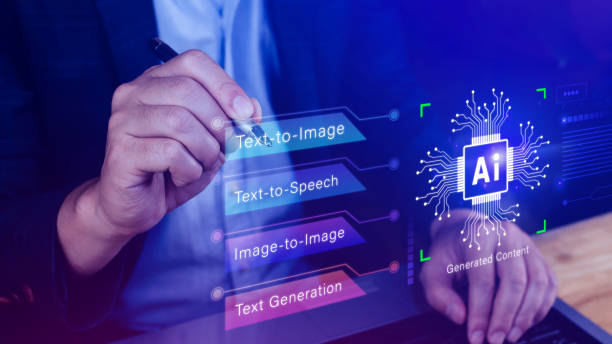
The use of artificial intelligence robots can have a significant impact on the labor market and employment.
On the one hand, AI robots can increase productivity and reduce costs by automating repetitive and dangerous tasks.
This can lead to increased profitability for companies and the creation of new job opportunities in fields related to AI robots.
On the other hand, AI robots can lead to job losses for some people by replacing humans in some jobs.
Jobs that require repetitive and automatable skills are most at risk.
For example, jobs such as telephone operators, production line workers, and taxi drivers may be affected.
However, experts believe that the impact of AI robots on the labor market is more complex than just job losses.
AI robots can compensate for some of the lost jobs by creating new job opportunities in related fields, such as the development, maintenance, and repair of robots.
Also, AI robots can allow humans to focus on more creative and strategic tasks by performing repetitive and tedious tasks.
To reduce the negative effects of AI robots on the labor market, measures such as training and retraining the workforce, creating support systems for unemployed people, and developing appropriate policies for the fair distribution of technology benefits should be taken.
Are you lagging behind in competition with large online stores?
Resaweb brings your business online with professional online store design and increases your market share!
✅ Increase brand credibility and customer trust
✅ Easy shopping experience leads to more sales
⚡ Take action now to receive a free website design consultation!
Ethical and Legal Issues Related to Artificial Intelligence Robots
![]()
The development and use of artificial intelligence robots raise several ethical and legal issues that need to be addressed:
Accountability If an AI robot causes harm to humans or property, who is responsible? Is the robot’s manufacturer, the robot’s owner, or the robot itself responsible? These questions still do not have clear answers and require review and the development of appropriate laws.
Privacy AI robots can collect a lot of information about people, such as personal data, habits, and behaviors.
How can people’s privacy be protected against the misuse of this information?
Discrimination AI robots may make discriminatory decisions due to inappropriate training data.
How can discrimination in robot decision-making be prevented?
Security AI robots may be cyberattacked and used for malicious purposes.
How can the security of robots be ensured?
Transparency How can it be ensured that robot decisions are transparent and understandable?
To solve these issues, we need to develop appropriate laws and regulations, create ethical standards, and develop security technologies.
Also, we need to prepare society to face the ethical and legal challenges of AI robots through awareness and education.
How to Build an Artificial Intelligence Robot: A Step-by-Step Guide
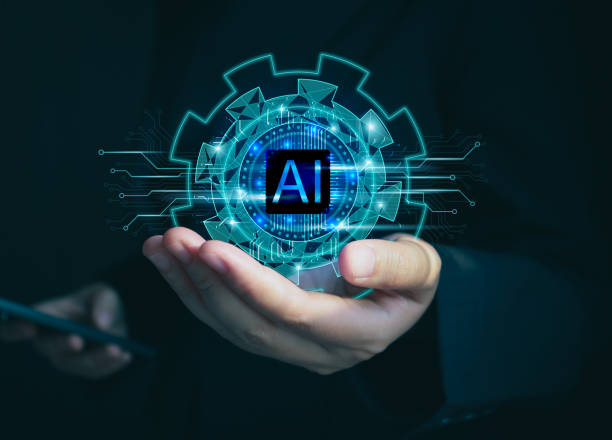
Building an artificial intelligence robot is a complex and multi-stage process that requires knowledge and expertise in various fields such as #robotics, #artificial_intelligence, and #programming.
In this section, we provide a step-by-step guide to building an AI robot:
- Define the goal Before anything else, you need to define your goal for building the robot.
What is your robot supposed to do? What problems will it solve? Answering these questions will help you determine the specifications and features needed for your robot. - Hardware Selection The robot’s hardware includes parts such as the body, motors, sensors, controllers, and power supply.
You need to choose the right hardware based on your goal and budget. - Software Selection The robot’s software includes the operating system, programming libraries, and artificial intelligence algorithms.
You need to choose the right software based on your hardware and programming skills. - Design and Construction After selecting the hardware and software, you need to design and build your robot.
You can use CAD software to design the robot’s body and then build the parts using a 3D printer or other methods. - Programming After building the robot, you need to program it.
You need to write code that tells the robot how to move, interact with sensors, and make decisions. - Training After programming, you need to train your robot.
If you are using machine learning algorithms, you need to collect appropriate training data and train the robot using this data. - Testing and Improvement After training, you need to test your robot and evaluate its performance.
If the robot does not work properly, you need to modify its code or hardware and test it again.
Building an AI robot is a challenging but very exciting project.
With patience and perseverance, you can build an intelligent robot that does amazing things.
Frequently Asked Questions
| Question | Answer |
|---|---|
| What is an Artificial Intelligence Robot? | It is a robot that uses artificial intelligence capabilities to understand the environment, reason, learn, and make decisions to perform complex tasks independently. |
| What is the main difference between a regular robot and an AI robot? | AI robots can learn and adapt to their environment, while regular robots typically operate based on fixed and pre-determined programming. |
| In what areas are AI robots used? | In areas such as industry (production lines), medicine (robotic surgeries), services (customer support, smart vacuum cleaners), exploration (space and underwater), and entertainment. |
| How do AI robots learn? | They acquire new skills through Machine Learning and Deep Learning algorithms, by analyzing large amounts of data and identifying patterns. |
| Can AI robots have emotions? | Currently, no. They can identify or simulate emotions, but do not have the real experience of emotions like humans. |
| What are the most important benefits of using AI robots? | Increased productivity, reduced human error, performing dangerous or repetitive tasks, and providing innovative and efficient services. |
| What challenges exist in the development of AI robots? | The need for large amounts of high-quality data, the complexity of algorithms, ethical issues, cybersecurity, and high research and development costs. |
| Are AI robots dangerous to humans? | No, if safe design principles and ethical regulations are followed. Concerns are more related to social and economic impacts such as changes in the labor market. |
| What is an example of an AI robot in everyday life? | Smart vacuum robots (such as Roomba) that automatically map and clean the house, or smart voice assistants (such as Siri and Alexa). |
| How is the future of AI robots predicted? | They are expected to become smarter, more autonomous, and capable of more complex interactions with humans, and play a more prominent role in industry, medicine, transportation, and daily life. |
And other services of Rasa Web advertising agency in the field of advertising
Intelligent customer journey map: a fast and efficient solution for managing campaigns with a focus on dedicated programming.
Intelligent SEO: an effective tool for attracting customers by using real data.
Intelligent social media: a creative platform to improve sales growth with targeted audience targeting.
Intelligent digital advertising: a combination of creativity and technology to increase sales through an SEO-oriented content strategy.
Intelligent reporting: a combination of creativity and technology for online growth through dedicated programming.
And over hundreds of other services in the field of internet advertising, advertising consulting and organizational solutions
Internet Advertising | Advertising Strategy | Advertorial
Resources
What is a Smart Robot and How Does It Work?
,What is Artificial Intelligence? Complete Introduction to Applications, Advantages, Disadvantages, Types, and Everything You Need to Know
,Types of Robots and Their Applications
,Difference between Artificial Intelligence and Robotics: Which is Right for Your Business?
? Are you ready to transform your business in the digital world? Rasa Web Digital Marketing Agency, with expertise in dedicated website design, targeted SEO and innovative digital marketing strategies, will guide you on the path to online success.
📍 Tehran, Mirdamad Street, next to the Central Bank, South Kazerun Alley, Ramin Alley, No. 6

